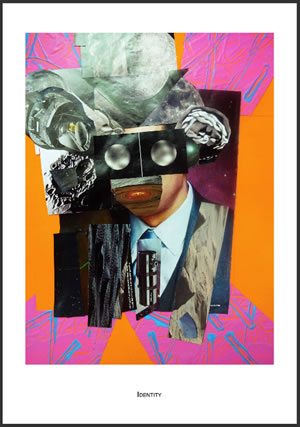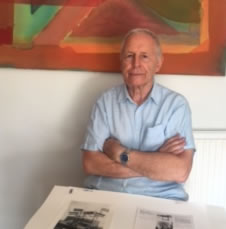Chiswick House Artist Explores Mankind's Distant Future
Barry Martin on what life might look like in a 29th century colony
|
Barry Martin, artist-in-residence at Chiswick House and Gardens has een extremely busy lately with a number of prestigious events. His work is included in one of the chapters of a book entitled 'Interior Futures', which will be launched by the Royal College of Art and Crucible Press California, at a prestigious event in March.
The ‘Interior Futures ‘ book is a compendium of essays from internationally renowned architects, designers and an artist, to contribute chapters that expressed their vision for the future , and how the interior spaces we inhabit will change through necessity, imagination and changes of environment, new materials , technology and location. The latter encapsulating space travel and exoplanets , as well as the need to survive in an increasingly hostile world.

Barry's entry in the book, see his explanation below
The book has contributions from over 40 international architects and designers from around the world. All the chapters are illustrated and a curated selected exhibition of these images form part of an exhibition to accompany the book launch.
Barry's chapter looks at the very distant future, the 29th. Century where humanauts have landed and established a colony on a planet within the brown dwarf system of Trappist 1 .
"A mass exodus of humanauts left earth in 2055 and expanded their travels to exoplanets within the known universe etc. I have visualised what interior models may be required for such a colony, with some illustrations, and the likely hazards and rewards such a place might . Looking to the future might not have seemed out of place to Lord Burlington and William Kent , whose endeavours to imaginatively establish evocative and enigmatic interiors and architecture at Chiswick Villa were ahead of their time, particularly in this country. "

A display at The Royal College of Art accompanies the book launch where images from the various authors can be viewed. Details below. Several other recent events include Barry's entry for the painter Sheila Girling ( Lady Caro, married to the sculptor Sir Anthony Caro) published January 2019 by Oxford University Press in their Dictionary of National Biography.
He has also showed work 2018 Yorkshire Sculpture Park. ‘ Occasional Geometries’ exhibition; and at the Hayward Gallery’s 50th. Anniversary Birthday Celebrations, 2018.
In 2016 Barry shared the stage with Pink Floyd at the V & A museum symposium 'Floyd at 50', along with seven other speakers including Nick Mason, Pink Floyd's drummer. Barry spoke about his '60's patented moving lights and geodesic domes in Chelsea in the 1960's and his talk was warmly received by the appreciative audiance.
Barry Martin became the most versatile and prolific British exponent of Kinetic Art in London in the Swinging Sixties and early 190s. Kinetic Art offered a European alternative to the Anglo-American options of Pop Art, Abstract Expressionism and Minimalism.

Barry Martin outside Chiswick House
Barry is based at a studio in the South Lodge, Chiswick House, which he restored over a period of years in the late 1980s, and he also mentors architectural students who come to Chiswick House as part of their studies.
The book launch for ‘Interior Futures’ at The Royal College March 14th. Thursday at 1:00 PM.-Friday 15 March. At 5:00 PM. Tickets are free ordered from www.eventbrite.com
This is the portrait of a designer in the 29th. Century, on Trappist 1f. The portrait depicts an accompanying robotic aid that is adjusting the ocular glasses the designer is wearing for protection from cosmic radiation , but also allows the wearer to view the world beyond the infra red and ultraviolet wavelength frequencies that normal earth eye vision is accustomed to. New circumstances will require new technological applications for the humanauts to survive, and designers will have to be technologically , scientifically and imaginatively able and inventive.
March 1, 2019